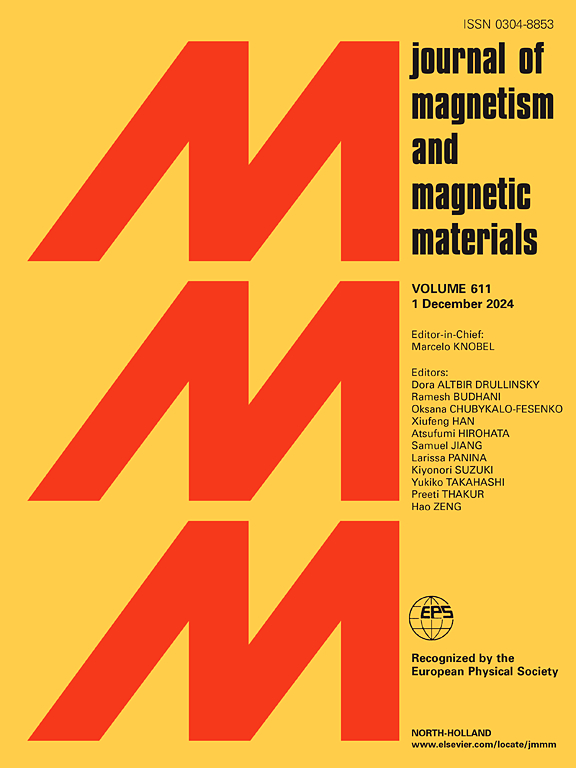Critical behavior and anisotropic magnetocaloric effect in off-stoichiometric van der Waals ferromagnet Fe3-xGaTe2
IF 2.5
3区 材料科学
Q3 MATERIALS SCIENCE, MULTIDISCIPLINARY
引用次数: 0
Abstract
The evolution of magnetic interactions, critical properties and magnetocaloric effects of off-stoichiometric room-temperature van der Waals Fe3-xGaTe2 are systematically investigated. Density functional theory (DFT) calculations reveal that the ferromagnetic exchange interactions between different Fe atoms play an important role in magnetic couplings and the change of Curie temperature TC. Moreover, the Fe vacancy in different sites can also significantly affect the TC. For Fe2.72GaTe2.01 single crystal, the critical exponents β of 0.474(3) and γ of 1.018(9) with TC at 336.7 K are obtained by the modified Arrott plot, whereas the critical exponent δ of 2.72(1) is yielded from a critical isotherm analysis at TC. The results of these critical exponents indicate that off-stoichiometric Fe2.72GaTe2.01 shows an approximate mean-field critical behavior. Furthermore, the exchange interaction distance decays as J ≈ r-4.53 proving the long-range ferromagnetism. In addition, the single crystal exhibits an anisotropic magnetocaloric behavior. The maximal value of the magnetic entropy change ΔSm reaches -1.7 (-1.0) J kg-1K−1 for a magnetic field change of 50 kOe in H//c axis (H//ab plane). Based on the field dependent ΔSm, the calculated critical exponent n is less than 2 at around TC, confirming a second-order type of the magnetic transition and reliability of the obtained critical exponents.
求助全文
约1分钟内获得全文
求助全文
来源期刊

Journal of Magnetism and Magnetic Materials
物理-材料科学:综合
CiteScore
5.30
自引率
11.10%
发文量
1149
审稿时长
59 days
期刊介绍:
The Journal of Magnetism and Magnetic Materials provides an important forum for the disclosure and discussion of original contributions covering the whole spectrum of topics, from basic magnetism to the technology and applications of magnetic materials. The journal encourages greater interaction between the basic and applied sub-disciplines of magnetism with comprehensive review articles, in addition to full-length contributions. In addition, other categories of contributions are welcome, including Critical Focused issues, Current Perspectives and Outreach to the General Public.
Main Categories:
Full-length articles:
Technically original research documents that report results of value to the communities that comprise the journal audience. The link between chemical, structural and microstructural properties on the one hand and magnetic properties on the other hand are encouraged.
In addition to general topics covering all areas of magnetism and magnetic materials, the full-length articles also include three sub-sections, focusing on Nanomagnetism, Spintronics and Applications.
The sub-section on Nanomagnetism contains articles on magnetic nanoparticles, nanowires, thin films, 2D materials and other nanoscale magnetic materials and their applications.
The sub-section on Spintronics contains articles on magnetoresistance, magnetoimpedance, magneto-optical phenomena, Micro-Electro-Mechanical Systems (MEMS), and other topics related to spin current control and magneto-transport phenomena. The sub-section on Applications display papers that focus on applications of magnetic materials. The applications need to show a connection to magnetism.
Review articles:
Review articles organize, clarify, and summarize existing major works in the areas covered by the Journal and provide comprehensive citations to the full spectrum of relevant literature.
 求助内容:
求助内容: 应助结果提醒方式:
应助结果提醒方式:


